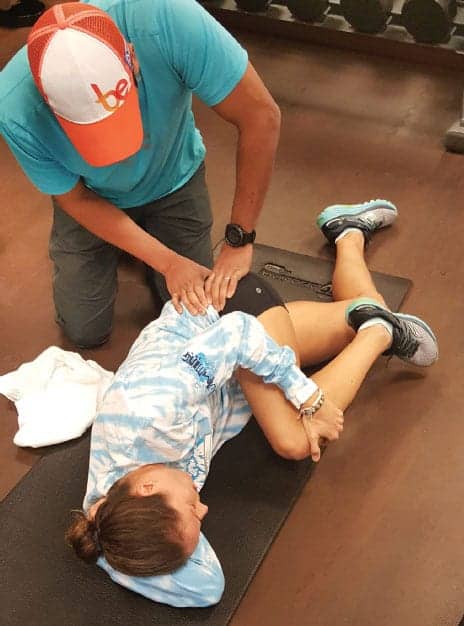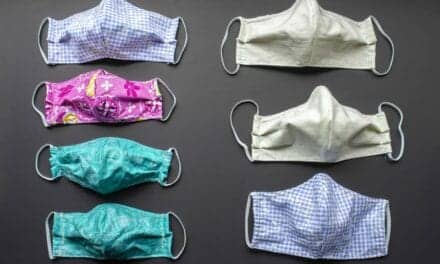
Under a cash-based business model, physical therapists are able to spend considerably more time with patients treating, testing, problem solving, and engaging in two-way dialogue.
By Eric Oliver, PT
It’s an exciting time to be in the physical therapy arena. Cutting-edge treatments and new technology are making it easier to deliver effective and efficient therapies for clients. Along with these new practices are opportunities to evaluate the billing structure for clinics to improve both office efficiency and quality of care.
As clinicians, we lead the charge in this movement, and it is worth our attention to consider a few best practice tips that can help practices make the leap to becoming insurance-free.
Insurance Model Is Outdated for Modern PT Practice
Traditional physical therapy clinics rely on insurance reimbursement for payment, which can take anywhere from 30 to 120 days after time of service to collect and oftentimes does not reimburse at 100%. That said, a high volume of patients are required to cover operating costs, leaving physical therapists with multiple patients in any given hour. There is a high utilization of exercise equipment, modalities, assistants, and aides at these types of clinics due to the need to provide therapeutic intervention without hands-on production from the physical therapist.
In this traditional PT clinic setting, I didn’t feel as though I had enough time with each patient to practice my PT craft to the fullest. I was effective enough, but not to the level I knew I could be. Not only that, but I couldn’t engage and connect with patients, who were yearning to feel heard and valued. In the last traditional outpatient orthopedics job I held, I constantly received feedback regarding how much people appreciated the time I gave them but were disappointed they couldn’t spend enough time with me.
Better for Clients, Better for Business
The cash-based (also known as non-insurance-based) model for physical therapy provides patients with an individualized treatment approach that is truly tailored to each person based on his or her specific needs. Our time with each client is exclusive to them. There is no other person that is more important than he or she at that time. What this means is a patient can fully explain how they are feeling and ask all of their questions. In turn, as therapists we can ask as many follow-up questions as we want, filter that information in a timely manner, and apply these assessments to set up the appropriate treatment plan. This individual time then allows for the therapist to treat, test, repeat—allowing for additional problem solving to narrow down the best course of therapeutic action and home prescription.
The end result for clients is a resolution of their issues within a shorter time span that ultimately leads to restoring their life’s rhythm. When a client successfully leaves our care, not only have they reached the set goals but they also know what to do to prevent the issue from happening again. This is accomplished with thorough progressions in their home exercise program, referral to our in-house personal trainer, or thorough communication to their own fitness expert.
On the business end, by not taking insurance we eliminate the delay in getting reimbursed for the services we provide. Gone is the submit and wait to get paid process. Rather, the business gets paid before the client leaves the office after each visit. This allows us to keep a better eye on our available cash flow.
Continuum of Care for Competitive Differentiation
We also offer a continuum of care beyond physical therapy treatments within our clinic. Beyond Exercise patients receive a thorough home exercise program and a maintenance program. Additionally, we have in-house programs and services that our patients can continue with after therapy—Pilates, personal training, massage, and sports performance. All of this leads to what every patient wants when they first walk through our doors—an enhanced version of themselves that will allow them to do their sport, passion, occupation, and hobby without limits.
[sidebar float=”right” width=”250″]Product Resources
The following companies offer fitness products for physical therapy practices:
Exertools
www.exertools.com
Fitter International Inc
www.fitter1.com
Magister Corporation
www.magistercorp.com
NZ Manufacturing
www.nzcordz.com
OPTP
www.optp.com
Railyard Fitness
www.railyardfitness.com
Spirit Medical Systems Group
www.spiritmedicalsystems.com
SPRI Products
www.spri.com
Stretchwell
www.stretchwell.com
The Hygenic Corporation
www.hygeniccorp.com[/sidebar]
The Big Question: How Can Clinics Go Insurance-Free?
There are two important steps to consider when changing your payment model: logistics of the transition, and communicating the billing to patients.
The best approach we have seen for transitioning from insurance-based to cash-based is to slowly discontinue contracts with the least lucrative insurance companies. By choosing to not participate with one, two, or three insurance companies, you are opening up the option for patients to partake in your services at a cash rate.
Communicating this change can be difficult, as many clients are used to the traditional insurance-based model. In describing our billing to patients, it is explained that they can submit our receipts to their insurance company for reimbursement from the out-of-network benefits. They are also given the option to use a flexible spending account.
The primary approach we use to explain why we don’t bill through insurance is to point out that by not billing through insurance, we can spend much more time with them during their treatment sessions. When given a choice, people will typically choose to work with someone who can give the most attention to their needs. Ultimately, it comes down to the results. We get the results patients demand because we have the time, the skill, the team, and the resources to do so.
Improving Affordability with Home Equipment
The amount of time that we get to spend with each client affords us plenty of opportunity to educate our clients on thorough home treatments and exercises. The majority of home programs involve a spectrum of exercises and treatments that involve various equipment that is portable and affordable, depending on the phase of rehabilitation. Additionally, thorough home programs allow us to reduce a patient’s treatment frequency so that we don’t have to see them three times per week. This proves to not only be effective but cost-efficient for the patient by limiting the number of office visits, cutting down on travel time, elimination of missed work time to attend treatments, and reduced disruption of life schedules.
Specifically, we heavily utilize resistance bands to allow patients to work on foundational strength building, muscle activation, and neuromuscular re-education. The market has several providers that offer a variety of resistance bands, including Thera-Band from The Hygienic Corp, Akron, Ohio, and Hudson, Ohio-based Body Sport; both companies provide many of the bands used with our clientele. They are color coded according to the levels of resistance they offer. Other providers for these basic tools that have many applications for therapeutic exercise and activity include Stretchwell, Warminster, Pa, which offers its Fit-Lastic Therapy Products, made from natural rubber in distinct colors that identify a system of progressive resistance. Fit-Lastic Fit-Loops, Stretching Straps, and Fitness Balls are part of this product line and offer tools that can provide therapeutic activity affordably. Minneapolis-headquartered OPTP is also a source for Thera-Band loops and latex-free resistance bands. Therapy bands are given to clients on an as-needed basis and is considered a value add to paying out of pocket for our therapy services.
Also among the product essentials that are low-tech but provide many uses at relatively low expense are foam rollers and trigger point balls. These products are used to teach soft-tissue and joint mobilization techniques to promote ongoing tissue and joint movement after our treatments. Use of this kind of home equipment is imperative in fostering a patient’s ownership and self-responsibility to their own care. It also helps to promote a continuity of care outside of our therapy walls.
Go-Fit, Tulsa, Okla, offers an assortment of rollers including the 18-inch Go Roller and 24-inch Pro Foam Roller, designed for deep tissue massage. Trigger Point, Durham, NC, also provides foam rollers such as the GRID foam roller, which clients can use for self-massage and to roll through tight muscles and knots. An extensive line of foam rollers is available from OPTP that have utility for stretching sore muscles, improving core strength, balance, and flexibility. OPTP Black AXIS firm foam rollers are made of high-density foam for use that can include PT, Pilates, and sports training. OPTP also offers the Star Roller, which has a ridged surface that compresses and releases tissue and can enhance self-massage. The company likewise provides balls for use with trigger point therapy, such as Gymnic Myofascial Balls, available in varying sizes to treat trigger points according to location and sensitivity. PTP
Eric Oliver, PT, is founder of Beyond Exercise LLC, Cincinnati. For more information, contact [email protected].





